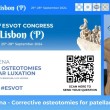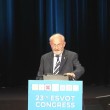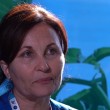Sam Snelling
BVSc MVS FACVSc (Small Animal Surgery).
Director, Advanced Vetcare, a private referral practice in Melbourne Australia.
G.S-S. How old where you when you became interested in being an animal doctor and how did that curiosity develop in causing you to apply to a veterinary school?
S.S. I grew up on a beef cattle farm and would help my parents with calvings, castrations, drenchings, dehornings, etc .from about 10 years of age. We always had plenty of animal husbandry jobs on the farm as kids and the interest in animals and their healthy grew from there.
G.S-S. Did any particular individual mentor you or stimulate your decision to become ‘vet’? And why did you decide to make orthopaedics a major interest of your career?
S.S I remember doing practical experience with a veterinarian, Dr. Peter Light, when I was 16 years of age. He was an equine vet who did amazing surgery, mostly in the paddock. The day I made the decision to make orthopaedics the focus of my career was when my first boss asked me to fix a tibial fracture in a Bull Terrier whilst he went to the next town to watch a game of cricket. The practice had a great Synthes AO plating kit and he must have known it was an easy one to fix as it came together really well and the patient did well. From that moment on I was hooked to orthopaedics. Dr. Wing Tip Wong was a significant mentor in my early surgery training as an intern and resident. He tried to teach me the importance of being thorough.
G.S-S. Please give readers the opportunity to know more about your referral practice, ‘Advanced Vetcare’ by mentioning our facilities, the number of clinicians and staff that you have as well as an idea of the care, and techniques available such as after-care and anything else that you would like to tell them.
S.S. Our clinic is 5 years old and has grown from a single surgeon +4 nurse practice to a 15 vet multidisciplinary referral hospital with 45 staff over that time. We have surgery, medicine and 24hr emergency and critical care with ophthalmology, veterinary behaviour, physiotherapy and hydrotherapy as ancilliary services. Our hospital has invested heavily in diagnostic imaging equipment with excellent DR, 16 slice Siemens CT and high-grade ultrasound machines. We have regular offsite MR access to a 1.5T machine. We have a high orthopaedics and spinal caseload. Our most common orthopaedic procedures include TPLO, TPO, THR and fracture repair. We have embraced locking screw techniques across our plating platforms. Thanks to our medicine colleagues we also have a interesting soft tissue caseload with intraabdominal neoplasia, endocrine tumours, PSS and congenital cardiac complaints. Our day specialist services are backed up by our evening critical care team.
G.S-S. Do you have any particular procedure or research that you have produced, of which you are particularly proud?
S.S. Starting the practice shortly after gaining specialist qualifications has limited the time available for research unfortunately. Our surgery section has developed a unique method of correcting and stabilising antebrachial deformity in dogs that greatly simplifies the planning and execution of this complex problem. To date, we have performed this modification on over 50 dogs and have been pleased with the outcomes. We are currently in the process of publishing these results.
















